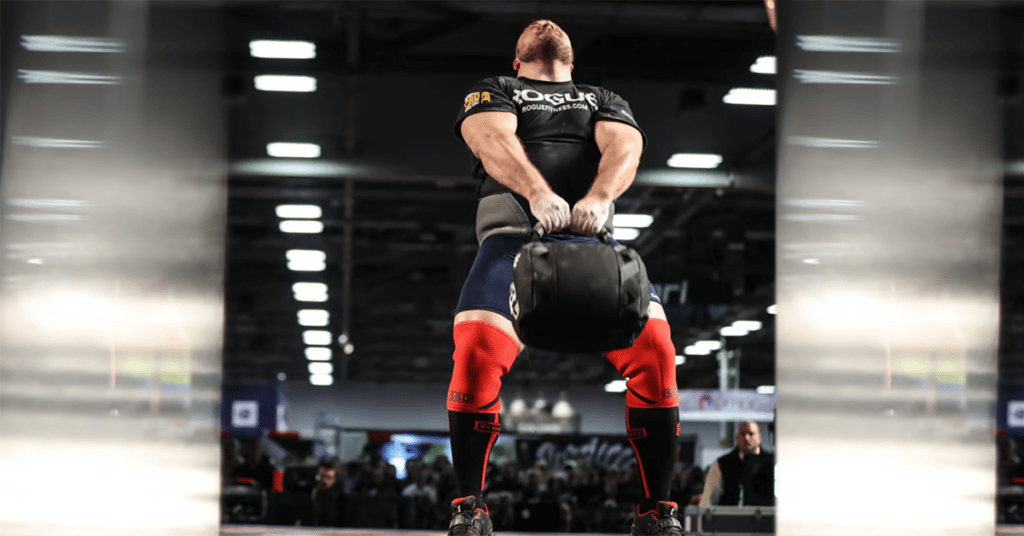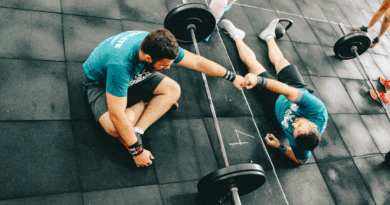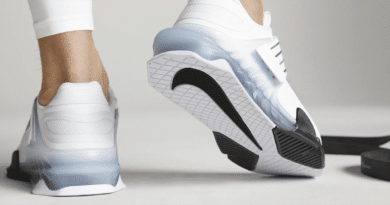Why You Should Train with the Rogue Strongman Throw Bag (Plus Best Place to Buy)
The Rogue Strongman Throw Bag is an implement that was first designed for the “Bag Over Bar” event at the Arnold Strongman Classic, and it’s now available here to the public for the first time.
What is the Rogue Strongman Throw Bag?
Made in the USA from durable 1000D and 500D Cordura, this is the same handled sandbag used by Hafthor Bjornsson (aka “The Mountain”) during the 2017 Rogue Record Breakers challenge, when he threw a bag loaded to 100LB over a 15’ tall high-bar.
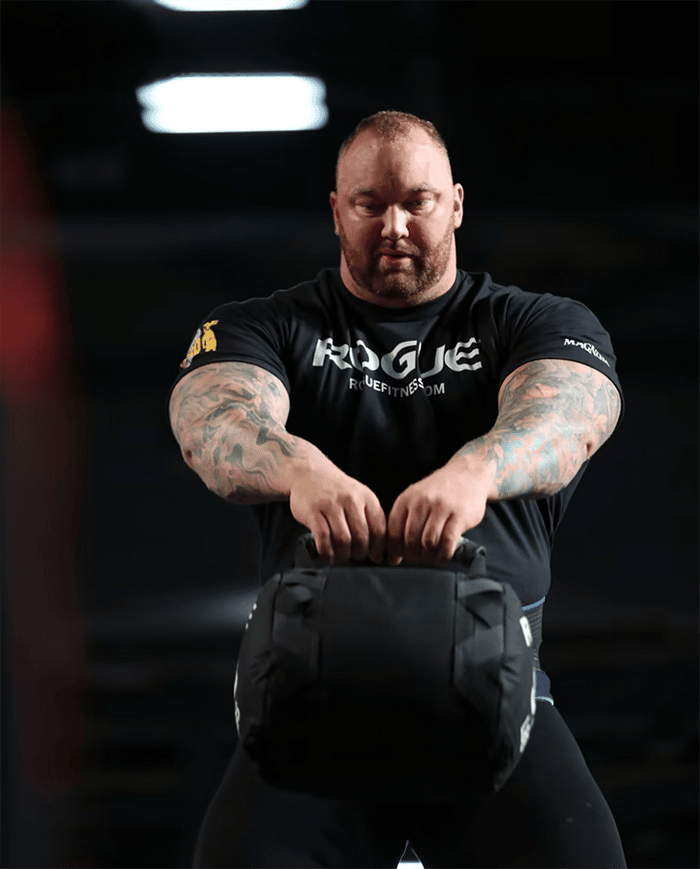
By popular demand, the Strongman Throw Bags were brought back for the 2018 Arnold Fest, and they have quickly entered the training arsenals of many of the world’s elite strength athletes.
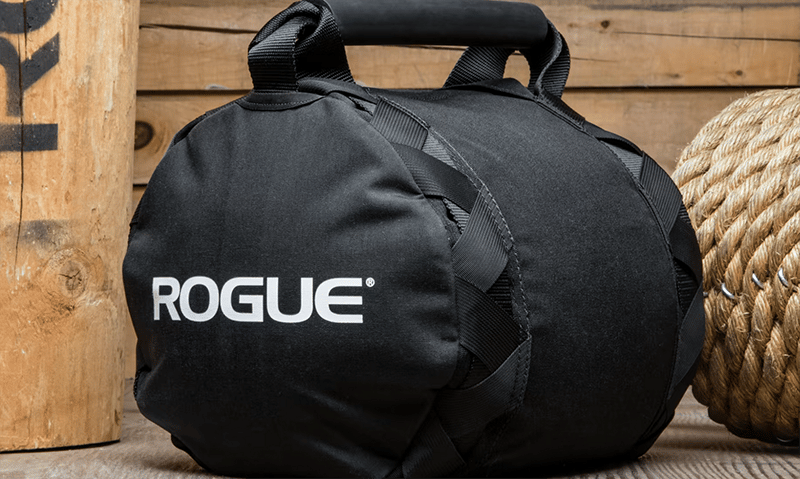
- What is the Rogue Strongman Throw Bag?
- Elite Design for All Athletes
- Rogue Strongman Throw Bag Specifications
- Benefits of The Rogue Strongman Throw Bag
- What Muscles Does the Rogue Strongman Throw Bag Work?
- Deltoids
- Pectorals
- Traps
- Triceps
- Biceps
- Core Muscles
- Hamstrings
- Rogue Strongman Throw Bag and Grip Strength
- Rogue Strongman Throw Bag Conclusion
- Other Equipment
Elite Design for All Athletes
In bringing the design to the public, they’ve installed the same convenient funnel-filler technology utilized in their Strongman Sandbags, Cyclone Sandbags, and standard Training Sand Bags.
The zipper sits on the top of the bag just below the handle, and the funnel filler is contained within that zipper.
This ensures steady containment of the fill material while allowing for easy, precise weight adjustments.
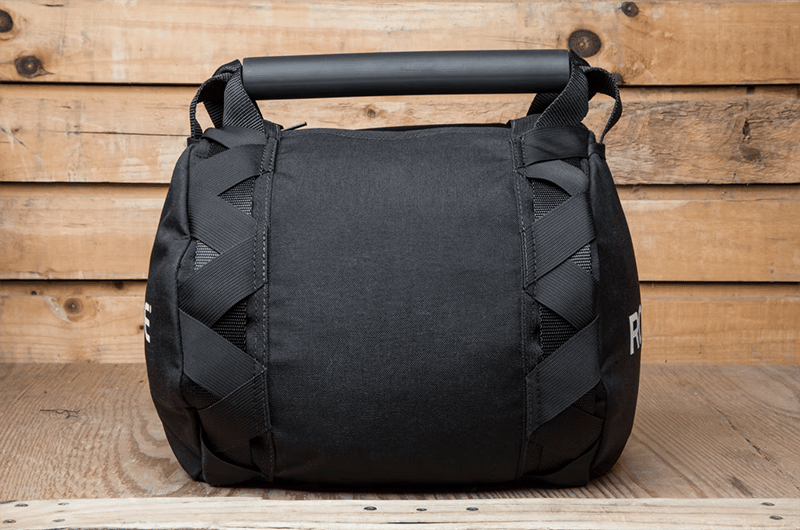
Each Throw Bag ships unfilled, enabling the athlete to customize the weight and choose their own desired fill media (crumb rubber, sand, lead shot, etc.). Customers have the option of adding a 55LB supply of crumb rubber to their order.
Rogue Strongman Throw Bag Specifications
- Made in the USA – Patent Pending
- As seen at the 2017 and 2018 Arnold Strongman Classic
- 1000D and 500D Cordura construction
- 12″ diameter, 13″ length
- Sold Unfilled
- Approx. Max Loading Weight: 75LB with sand; 30LB with crumb rubber
- Funnel Filler Technology for quick, clean, custom weight adjustments
- Rubber Handle: 10″ long x 1-0.375″ diameter three pieces of 1.5″ wide nylon webbing fed through it.
- MIL spec criss-cross webbing for extra reinforcement
- Colour: Black
- Rogue logo in white on both ends
Benefits of The Rogue Strongman Throw Bag
So, how exactly will this piece of kit help you? Or your gym members?
Increase Raw Power
The object will improve your power output. Chucking a heavy bag around is an excellent way to develop raw power in an unrefined and incredibly functional way.
Odd Object Training
Training with odd objects can be a highly effective way to get you prepared for the unknown.
It will improve your skills with other odd objects such as sandbags and logs as well.
Build Core Strength
Your core will be forced to work hard to stabilise, balance and coordinate all the movements.
What Muscles Does the Rogue Strongman Throw Bag Work?
The object works the following muscle groups.
Deltoids
The deltoids are the muscles of the shoulder. They are responsible for raising your arm to the front of your body.
The deltoids are also known as shoulder muscles because they sit directly on top of your shoulder joint and function primarily with that joint.
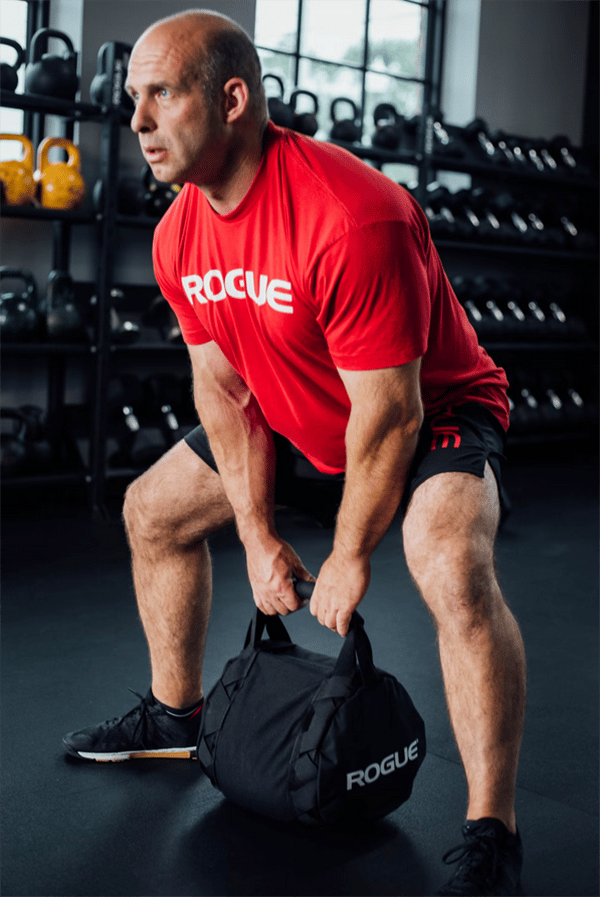
The deltoid muscle group is made up of three individual sections: anterior (front), lateral (side), and posterior (rear). These three sections work together to raise your arms when you want to do something as simple as grab something from overhead, or complete more complex motions like throwing a baseball pitch or lifting weights at the gym.
Pectorals
The pectoralis major is a powerful muscle that extends from the sternum to the upper arm.
You can think of it as a pair of thick brackets – one on either side of your chest cavity. The medial (inside) portion of this muscle covers your ribs, while its lateral (outside) region lies under your arms and attaches to them via tendons. Your pecs are responsible for both flexing and adducting your arms toward your torso, along with assisting in shoulder extension.
The pectoralis minor lies beneath the larger pectoralis major and connects from ribs 7-12 to the upper part of your humerus (upper arm bone). It assists with shoulder abduction as well as flexion at an angle greater than 90 degrees—such as when you bring both hands together in front of you instead of next to each other or behind you.
The serratus anterior is a wing-shaped muscle that forms an overhanging shelf along each side of your rib cage from just below where it meets up with those adjacent vertebrae down to its attachment near the front edge by collarbone level.
Traps
Traps are muscles on the back of the neck. They are used in pulling exercises and many sports, including golf and tennis. They’re also used in weightlifting, rowing and swimming.
- The trapezius muscle covers much of your upper back, with its widest point at your shoulder blade and narrowing down to meet at a line running straight down from your neck along your spine.
- Traps are responsible for extending your upper body (straightening it from flexed), rotating it to one side or rolling it over onto its side as well as lowering it toward the floor when you bend over.
Triceps
The triceps are the big muscles on the back of your upper arm. They are responsible for straightening your arm, and make up two-thirds of the upper arm (the other third is made up by the biceps). These muscles work with the biceps to flex your elbow.
Biceps
The biceps are a pair of muscles located on the front of your upper arm. They are used primarily to bend the elbow and flex your forearm.
Biceps also provide support for the shoulder, which means that working out your biceps can help protect and strengthen them in other ways as well.
Core Muscles
Core muscles are a collection of muscles that work together to help stabilize the body and give it support.
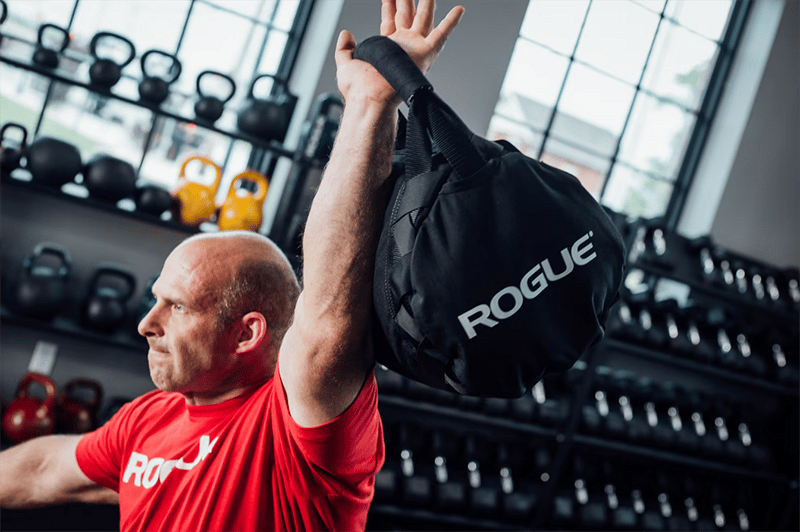
These core muscles include the gluteal muscles, the abdominals, and the erector spinae, which are all located in your lower back. The obliques (side abs) also play a role in core stability as well as movement. So do the quadratus lumborum (lower-back) muscles and several other deeper abdominal muscle groups.
Hamstrings
The hamstrings are the muscles on the back of your thigh. They are used for running, jumping and kicking.
The three muscles in the hamstrings are:
- Biceps femoris (located on the outside of your leg)
- Semitendinosus (located on top)
- Semimembranosus (located toward front of hip
Rogue Strongman Throw Bag and Grip Strength
Grip strength is important for many sports and will be significantly developed by working with the Rogue Strongman Throw Bag.
Rogue Strongman Throw Bag Conclusion
If you want to enhance all of these muscles then add a Rogue Strongman Throw Bag to your training arsenal.

